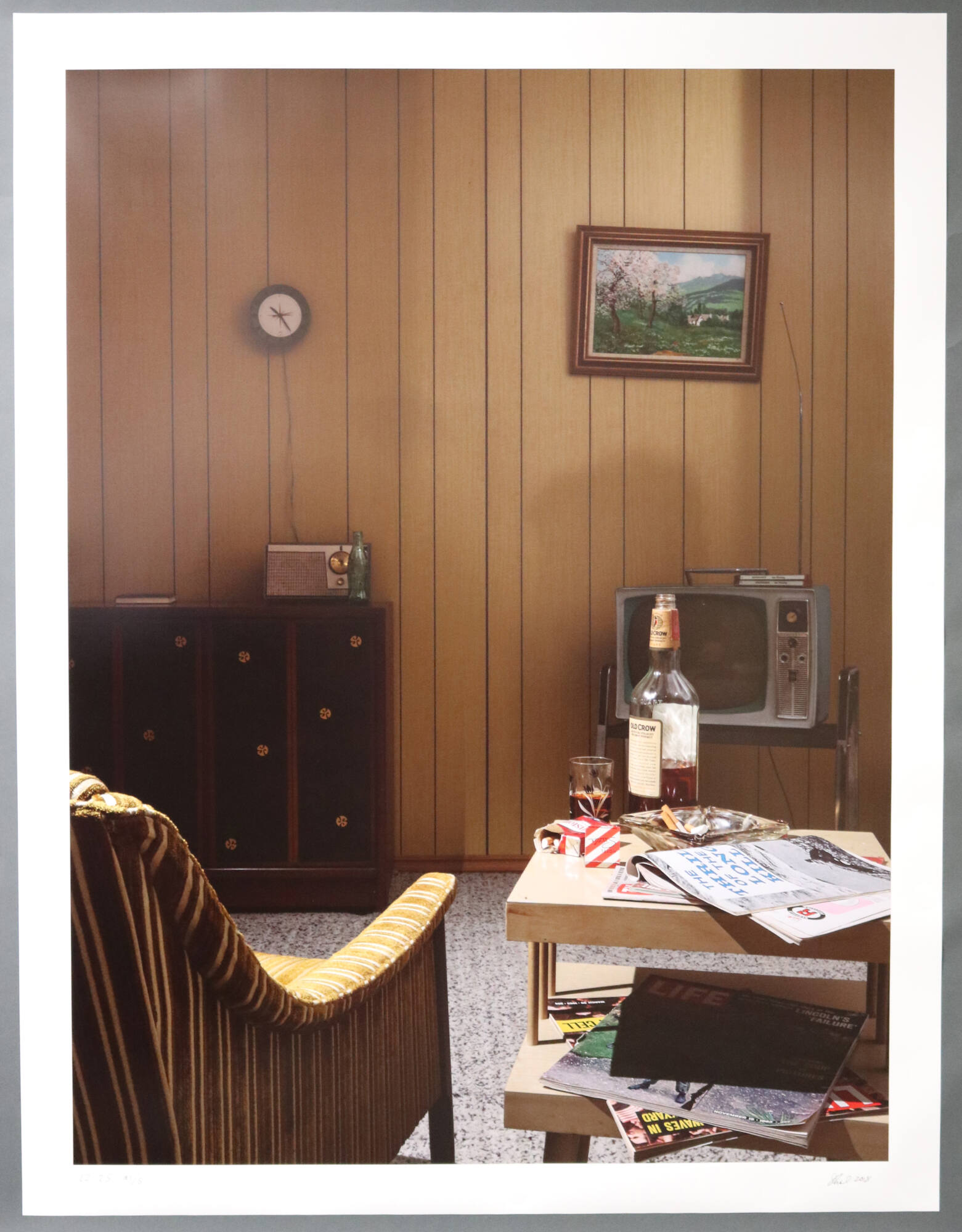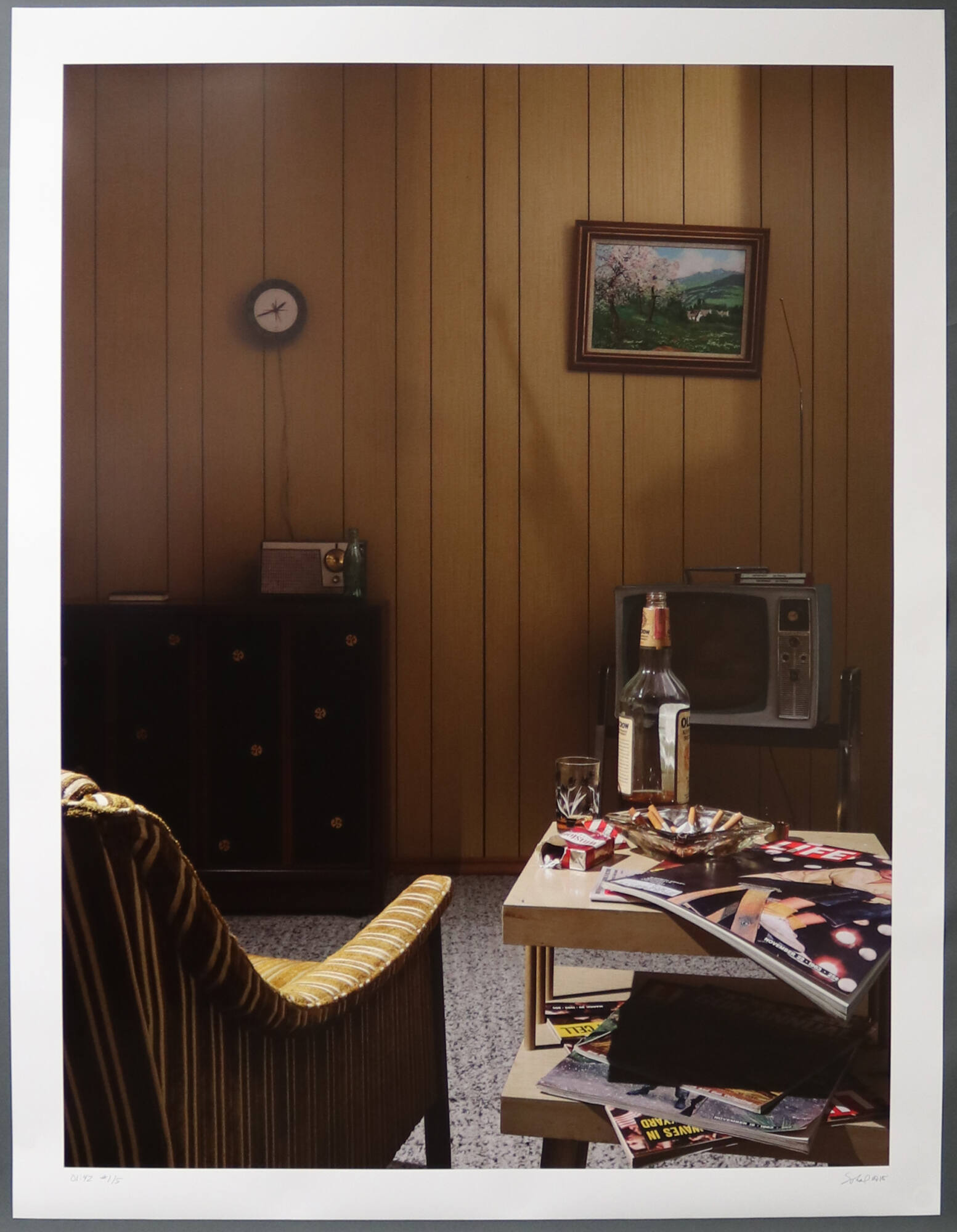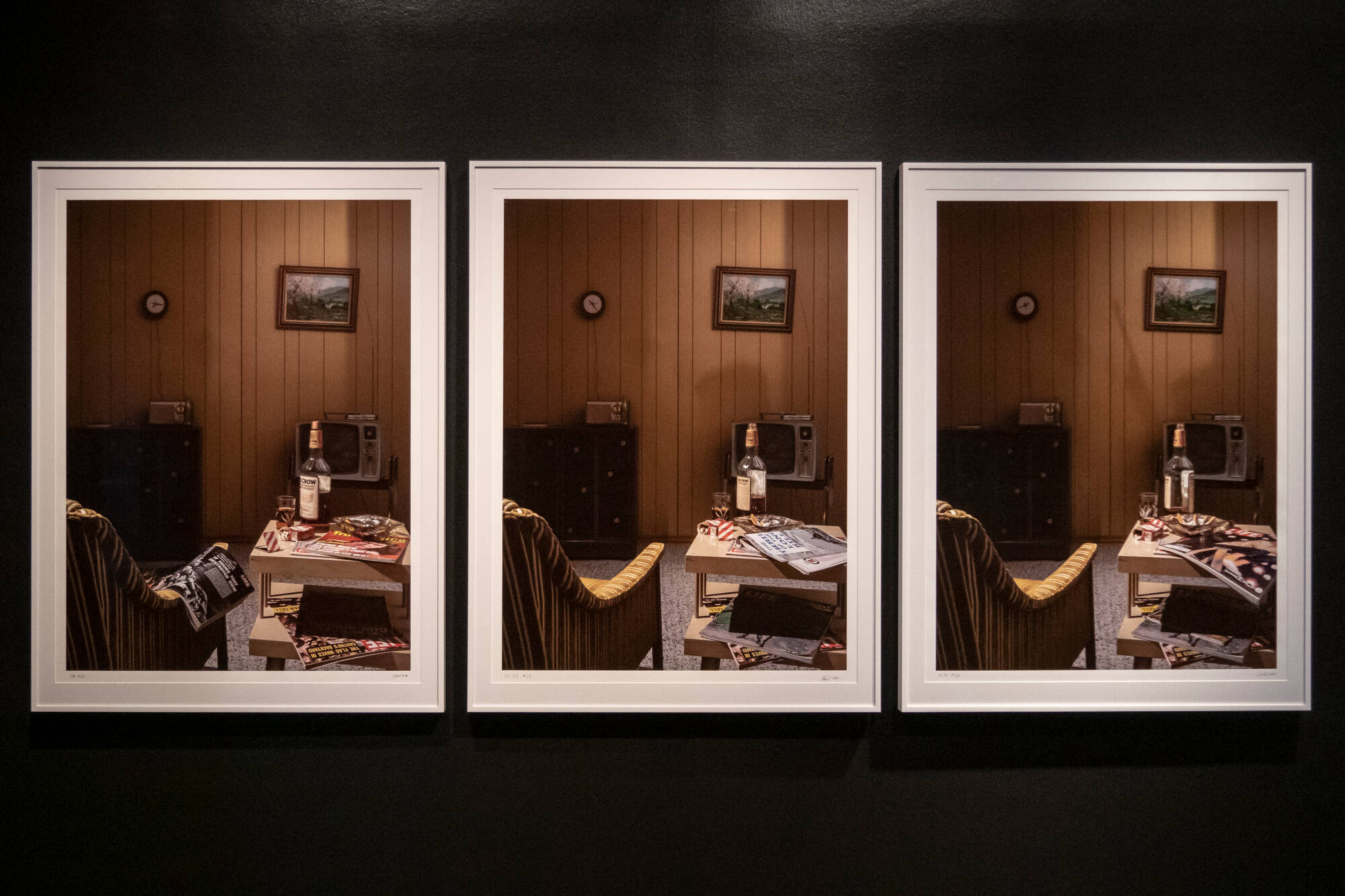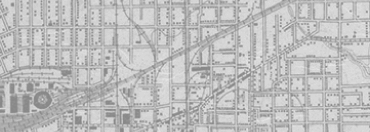


Back
"21 November," photographic triptych by photographer Paul Sokal
"21 November" is a photographic triptych by local Dallas photographer Paul Sokal that imagines the night before the Kennedy assassination. Rather than focusing on the actual event, the artist evokes an assassin’s mental state as he contemplates what the next day will bring. Each image shows the same intimate setting in a living room with strewn magazines and a decreasing volume of whiskey in a bottle on a side table next to an armchair. A clock on the wall and shifting shadows illustrate the passage of time in each of the images. These small differences between the three images offer glimpses into the changing state of mind of the unseen occupant of the room as the artist asks the viewer to consider the assassin’s point of view and decision. In his oral history with the Museum, Sokal said of his work, “I started to think about what a monstrous act it was, [and] that [the assassination] was committed by one or more human beings, not by a monster. And what was that like the night before?”
"21 November," photographic triptych by photographer Paul Sokal
2018
Paper, Photo
each piece in triptych measures: 46 7/8 × 36 in. (119.1 × 91.4 cm)
Paul Sokal Collection/The Sixth Floor Museum at Dealey Plaza
2019.015.0001
Exhibit Label: A native Texan, Paul Sokal got his first real camera, a Voigtlander Rangefinder, in 1964 and won his first photography prize in 1969 in the Buffalo Evening News Amateur Snapshot Contest. He then took a 25-year hiatus to become a medical doctor but returned to photography and began shooting weddings in 2004. Sokal shifted his focus to fine art photography, and his images have been exhibited in galleries as well as private and corporate collections. He has won numerous awards, including the Grand Prize in Dallas’ inaugural Trinity River Photography Contest and two merit awards in the Black and White Magazine Individual Image Contest. He is a photography judge for the State Fair of Texas, and one of his large Dallas panoramas hung in the office of former Dallas Mayor Mike Rawlings. (Special exhibit, "Art Reframes History," on view on the Museum's seventh floor from September 9, 2020 through May 9, 2021)
Dallas photographer Paul Sokal was ten years old and living in Williamsville, New York, at the time of the assassination. That early childhood memory played a key role in the inspiration for his triptych, "21 November." In his 2019 oral history, Sokal recalls, "I was in one of my favorite junk stores, and I saw this TV. And I said, 'I've got to have that TV. I don't know why. I just know I need to have it.' And it sat in my studio for several months, and I was waiting for it to inspire me." Sokal began to think about the great television event of his childhood, when such a vintage TV would have been in use, and quickly decided that it had to be the Kennedy assassination. From there, Sokal began to think "about what a monstrous act it was, but it was committed by one or more human beings, not a monster. And what was that like the night before? And so, the TV led me to construct a set piece in my studio...." -- Stephen Fagin, Curator
An October 2020 gallery talk with Paul Sokal, part of the Museum's "Interrogating Art" virtual series to support the special exhibit "Art Reframes History," may be viewed on the Museum's YouTube channel: https://www.youtube.com/watch?v=9roGBdydn-k. -- Stephen Fagin, Curator

"21 November," photographic triptych by photographer Paul Sokal
"21 November" is a photographic triptych by local Dallas photographer Paul Sokal that imagines the night before the Kennedy assassination. Rather than focusing on the actual event, the artist evokes an assassin’s mental state as he contemplates what the next day will bring. Each image shows the same intimate setting in a living room with strewn magazines and a decreasing volume of whiskey in a bottle on a side table next to an armchair. A clock on the wall and shifting shadows illustrate the passage of time in each of the images. These small differences between the three images offer glimpses into the changing state of mind of the unseen occupant of the room as the artist asks the viewer to consider the assassin’s point of view and decision. In his oral history with the Museum, Sokal said of his work, “I started to think about what a monstrous act it was, [and] that [the assassination] was committed by one or more human beings, not by a monster. And what was that like the night before?”
"21 November," photographic triptych by photographer Paul Sokal
2018
Photographs
Pop Culture
Artwork
Artist
Assassination
Rifles
Cuba
Mafia
Photographer
Firearms
Castro, Fidel
Kennedy, Robert F.
LIFE Magazine
TV Guide
TRUE
True Police Cases
Statler Hilton Hotel
Dallas
Paper, Photo
each piece in triptych measures: 46 7/8 × 36 in. (119.1 × 91.4 cm)
Paul Sokal Collection/The Sixth Floor Museum at Dealey Plaza
2019.015.0001
Exhibit Label: A native Texan, Paul Sokal got his first real camera, a Voigtlander Rangefinder, in 1964 and won his first photography prize in 1969 in the Buffalo Evening News Amateur Snapshot Contest. He then took a 25-year hiatus to become a medical doctor but returned to photography and began shooting weddings in 2004. Sokal shifted his focus to fine art photography, and his images have been exhibited in galleries as well as private and corporate collections. He has won numerous awards, including the Grand Prize in Dallas’ inaugural Trinity River Photography Contest and two merit awards in the Black and White Magazine Individual Image Contest. He is a photography judge for the State Fair of Texas, and one of his large Dallas panoramas hung in the office of former Dallas Mayor Mike Rawlings. (Special exhibit, "Art Reframes History," on view on the Museum's seventh floor from September 9, 2020 through May 9, 2021)
Dallas photographer Paul Sokal was ten years old and living in Williamsville, New York, at the time of the assassination. That early childhood memory played a key role in the inspiration for his triptych, "21 November." In his 2019 oral history, Sokal recalls, "I was in one of my favorite junk stores, and I saw this TV. And I said, 'I've got to have that TV. I don't know why. I just know I need to have it.' And it sat in my studio for several months, and I was waiting for it to inspire me." Sokal began to think about the great television event of his childhood, when such a vintage TV would have been in use, and quickly decided that it had to be the Kennedy assassination. From there, Sokal began to think "about what a monstrous act it was, but it was committed by one or more human beings, not a monster. And what was that like the night before? And so, the TV led me to construct a set piece in my studio...." -- Stephen Fagin, Curator
An October 2020 gallery talk with Paul Sokal, part of the Museum's "Interrogating Art" virtual series to support the special exhibit "Art Reframes History," may be viewed on the Museum's YouTube channel: https://www.youtube.com/watch?v=9roGBdydn-k. -- Stephen Fagin, Curator














